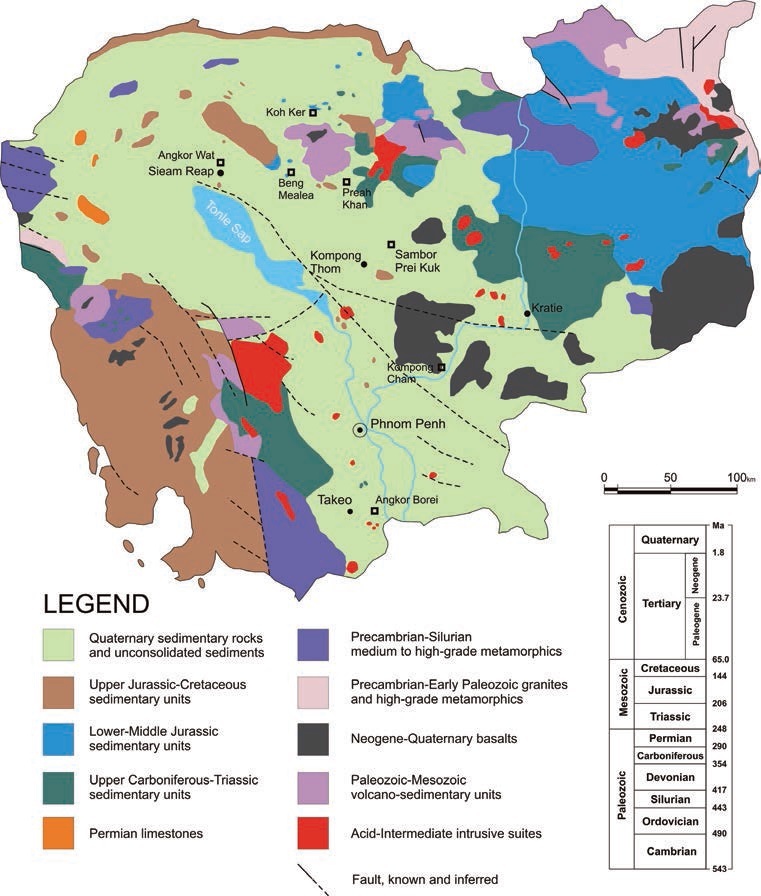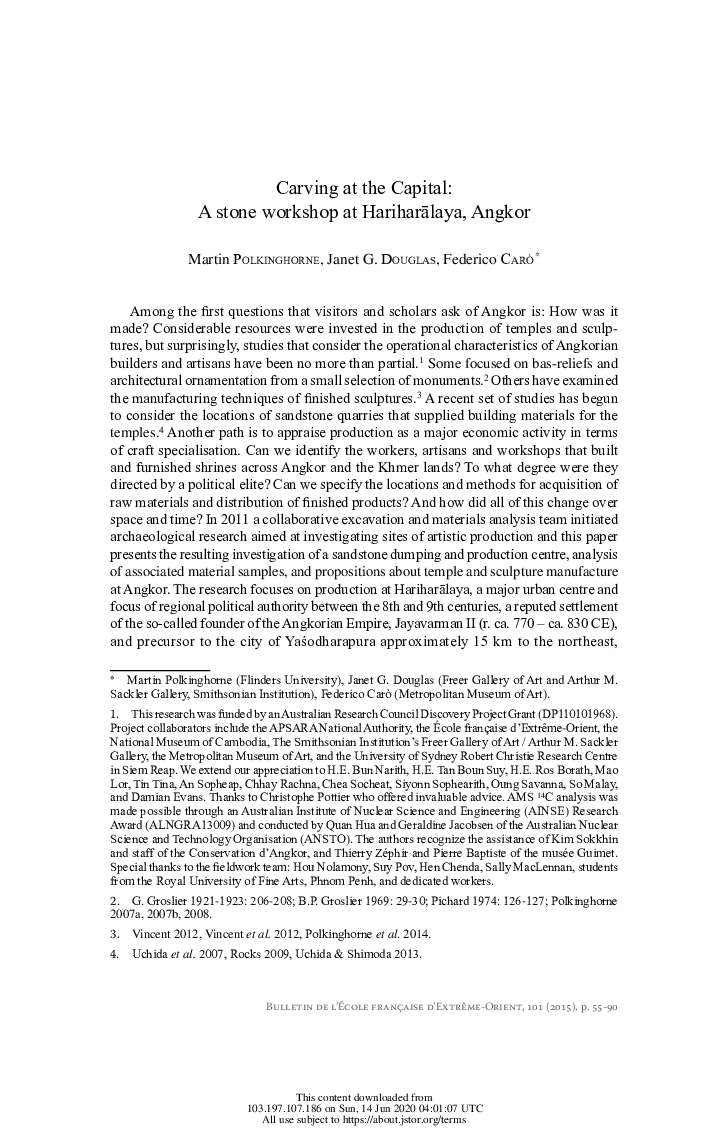Carving at the Capital: A Stone Workshop at Hariharālaya, Angkor
by Martin Polkinghorne
The builders, stone types and building techniques behind the Angkorean temples.

Publication: Bulletin de l'École française d'Extrême-Orient, Vol. 101, pp. 55-90
Published: 2015
Author: Martin Polkinghorne
Pages: 36
Language : English
pdf 3.1 MB
What lies behind the architectural and sculptural splendors of Angkor? How can we appraise art production in Ancient Cambodia as a major economic activity in terms of craft specialization? Can we identify the workers, artisans and workshops that built and furnished shrines across Angkor and the Khmer lands? To what degree were they directed by a political elite? Can we specify the locations and methods for acquisition of raw materials and distribution of finished products? And how did all of this change over space and time?
After over ten years of cumulative study dedicated to systematically characterising the sandstone of Angkor, the authors feel ready to bring us some answers: “A pattern of sandstone choice is beginning to emerge. Angkorian stonemasons used one broad lithotype for architecture and its ornamentation (mostly quartz and feldspathic arenite, including Lithotype 1 of the present study), and another for sculptures of deities (a variety of immature, lithic sandstones of dark, greenish colour, including Lithotypes 2 and 3 of the present study). Sandstone selection for sculptures does not appear to correspond with geographical or geological proximity, technical specifications of the material, the social or organisational context of production units, or the political administration of the state. Alternative hypotheses may find agreement with Angkorian belief systems evidenced from the epigraphic record.”
Authors: Martin Polkinghorne, Janet G. Douglas and Federico Carò
Photo: Building modenature (arrangement of mouldings to form a cornice) and rooftile deposit [Trench 1](by Sally MacLennan)
A geological map of Cambodia (Douglas & Caro):

Tags: architecture, sculpture, Hariharalaya, industries, quarries, raw materials
About the Author

Martin Polkinghorne
Martin Polkinghorne is a Senior Lecturer in Archaeology at Flinders University, Australia. Between 2011 and 2014, he led the Australian Research Council (ARC) Discovery project on pre-modern craft economies in Cambodia. This initiative discovered the first historic bronze foundry known in Southeast Asia and continues to excavate at Angkor.
Martin is a Chief Investigator of the ARC-funded Greater Angkor Project’s Urbanism after Angkor (14th — 18th century CE): re-defining collapse. In a complementary research program, Martin led the ARC Discovery Early Career Researcher Award (DECRA) project New Light on Cambodia’s Dark Age: The capitals of Cambodia after Angkor (1350 – 1750). Together these projects are conducting the first archaeological investigations of Cambodia’s Early Modern Period capitals on the banks of the Mekong and Tonle Sap arterial rivers.
Research of Cambodia during a time of quickening international trade reveals critical linkages between the celebrated Angkorian past and the present-day.
Martin Polkinghorne is Director of the University of Sydney Angkor Research Facility in Siem Reap, an Honorary Research Fellow of the Asian Studies Program, The University of Sydney, and a Member of the Advisory Board of Friends of Khmer Culture.

